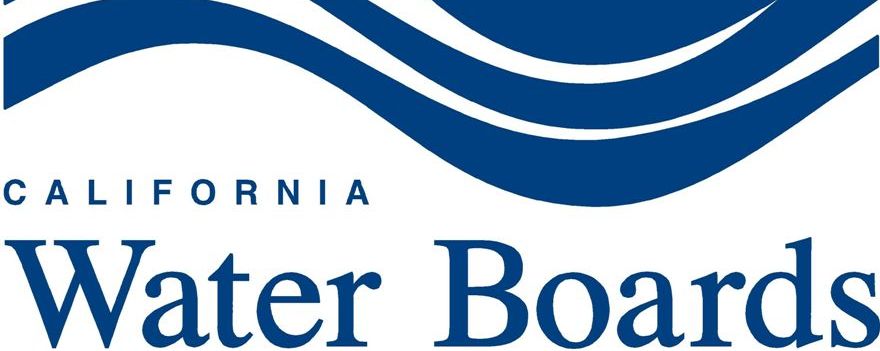From the State Water Resources Control Board:
Facing the likelihood of a fourth consecutive drought year, the State Water Resources Control Board announced two actions today that will allow the state and federal water projects to conserve water supplies in upstream reservoirs and more effectively operate their facilities in response to ongoing dry conditions.
The actions, in response to a petition by the Department of Water Resources and the federal Bureau of Reclamation, balance public health, water supply and environmental needs and allow the projects to better prepare for extreme drought conditions should they persist into 2015. The actions are similar to those taken last January in anticipation of statewide drought conditions.
State Water Board Executive Director Tom Howard issued an order approving elements of the Jan. 23 petition to adjust flow and water quality requirements that govern inflows and outflows in the Sacramento-San Joaquin Delta and operation of the Delta Cross Channel Gates for the next two months. These requirements, in place since 1995, help control salinity in the Delta and protect fish and wildlife uses, and water quality for municipal, industrial and agricultural uses.
The Sacramento-San Joaquin Delta provides drinking water to two-thirds of the state’s population, supplies some of California’s most productive agricultural areas and is one of the largest ecosystems for fish and wildlife habitat in the United States. The actions by the Executive Director, in consultation with the projects and with the federal and state fish and wildlife agencies, will help to assure that these uses are protected through the drought.
“Persistent drought conditions and our experiences last year in balancing water supply and environmental requirements require us to work nimbly together,” said Tom Howard, Executive Director of the State Water Board. “The projects are initiating part of their plan to prepare for these events ahead of time. I expect more requests for action in the weeks and months ahead. Building on our experience working together last year, I expect that some tough decisions may have to be made about water use in 2015 in the event we don’t receive any appreciable precipitation in the coming months.”
Specifically, this approval allows the Delta Cross Channel Gates to be opened at times during the next two months in order to reduce salinity intrusion that can occur when less water is released into the Bay Delta system. The gates typically remain closed during the late winter and spring in order to protect fish from straying into the central Delta where survival is low.
Opening the gates allows high quality fresh water to flow through the central Delta, reducing saltwater intrusion and the need for releases from upstream reservoirs. The State Water Board’s order approving the petition provides flexibility to operate the gates based on evolving water quality conditions and fish migration information.
The approval also allows for modifications in Delta outflows and San Joaquin River flows over the next two months so that water can remain in storage for critical uses later in the year in the event of continued drought conditions, including preventing salinity intrusion, minimal water supply needs, and fish and wildlife protection. The approval includes further modifications to export requirements requested in the petition that allow for minimal water supplies while protecting fish and wildlife uses.
The order does not approve all of the requested changes to the export requirements at this time. Specifically, the Projects requested a higher level of exports with a lower level of outflows than what was allowed last year under a similar change. The Executive Director did not approve the change at this time but instead indicated that this issue should be discussed at a public workshop on February 18.
Although the order is effective immediately, the State Water Board will hold a workshop on February 18 to hear from the public and interested parties on the order, potential further requests to modify Delta flow and water quality requirements, or other actions that the Board may take. During this workshop, the Board will discuss the petition, the Executive Director’s action in response to the petition and potential future requests under the petition. The State Water Board may provide direction to the Executive Director on modifications to his order or on how to proceed on future requests. The State Water Board may also consider taking action related to this matter, including issuing its own order modifying the Executive Director’s order.
In addition, the State Water Board recently sent a notice to all water right holders that curtailments could begin in key watersheds if water demand exceeds available supply. Both of these actions, which are directed in the Governor’s January 2014 State of Emergency declaration, reflect extraordinary circumstances brought on by the state’s record drought.
After a wet December, 2015 has started out with the driest January on record. The runoff from December storms gave a modest boost to major reservoir storage, but conditions since then have turned dry. With 2015 appearing to be the start of a fourth dry year, the State Water Board is working in coordination with the state and federal water projects as well as the various state and federal fish and wildlife agencies as early as possible to plan ahead.
Visit SaveOurWater.com to find out how everyone can do their part, and visit Drought.CA.Gov to learn more about how California is dealing with the effects of the drought.
Information on what the State Water Board is doing in response to drought conditions.
Information on curtailments can be found here.
——————————————–
Get the Notebook blog by email and you’ll always be one of the first to know!
- Sign up for daily emails and get all the Notebook’s aggregated and original water news content delivered to your email box by 9AM. Breaking news alerts like this one, too. Sign me up!
 Maven’s Notebook
Maven’s Notebook
constantly watching over the world of California water


